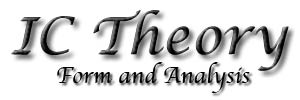

Four of the primary contrapuntal techniques used in fugal writing are Stretto, Inversion, Augmentation, and Diminution. The fugue on the following pages contains examples of each of these techniques. In order to understand its structure, you need to know a little of its background. The example is Contrapunctus 7 from The Art of Fugue by J.S. Bach. This is one of Bach's final compositions, partially meant as a supreme example of the art of contrapuntal writing. The work consists of nineteen separate pieces (entitled Contrapunctus), each demonstrating various compositional techniques. The unifying factor is that they are all based on the same subject, presented in the exposition of Contrapunctus 1 (see below).
Subject, Art of Fugue

Each of the above mentioned techniques can be defined as follows:
Stretto
Overlapping statements of the fugue subject (or the head of the subject).

Inversion
A mirror imaging of the subject (an ascending interval is replaced with a descending interval). This may be an exact mirror, or some of the intervals may be altered for tonal considerations.

Augmentation
The statement of the subject in uniformly longer note values (based on a ratio such as 2:1 or 3:1).

Diminution
The statement of the subject in uniformly shorter note values (based on a ratio such as 2:1 or 3:1).
